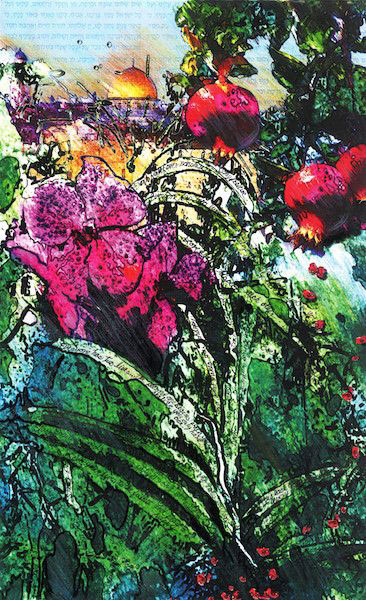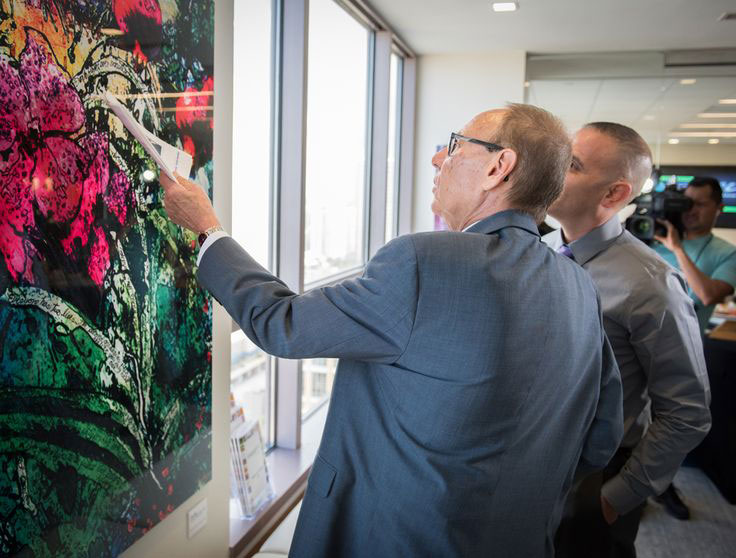The Memorial Tells the Story of Steven Sotloff’s Wish for Peace
By Tracy Ellyn
Throughout the history of art, memorials have always been both a reflection of their times and the power of the image to shape our remembrance. Ancient Egyptian memorials evoked not the pharaohs’ facial likenesses, but rather their impossibly larger-than-life power and strength via the imposing size, unmovable stone, and square shapes. Ancient Greek and Roman memorials emphasized the perfection of the human body during the era of humanism, while Gothic memorials de-emphasized the body during the religious Middle Ages. Stylistic turnaround was again clear during the Renaissance, when 3-dimensionality and perfect likeness reflected the natural world as well as the genius of the artist who created the piece.
Photos are Copyright 2014 Tracy Ellyn and Steven Sotloff Memorial 2LIVES Foundation.
All Rights Reserved.

Let’s fast-forward to Baroque paintings memorializing the person’s life as wealthy, gilded and frivolous, and those of the Surrealist era as a look into the inner psyche of the person. More recent works, such as the Vietnam Veteran’s Memorial, the Memorial to the Murdered Jews of Europe, and the 9/11 Memorial have us reflect, sometimes literally, on the amount of lives tragically lost. Recently, individuals have been memorialized with social statements and educational purpose.
So, when it came to memorializing late journalist Steven Sotloff, I had a lot to consider. Sotloff was barbarically beheaded by ISIS in front of the entire world after a distinguished young career in crisis journalism He unwittingly “introduced” the world to ISIS. It was a brutal, incomprehensible visual of our new era of savage political demands. Should we give any power to terrorism by memorializing the way he died, even if historic or reflective of our times? Even if educational? Certainly, any likeness of his physical self would be met by trolls with cruel reminders. So, the artist decided to memorialize him by telling the story of how he lived and what he hoped to accomplish.
The 5-foot tall memorial tells the story of Sotloff’s wish for peace that he strove for through his Middle East journalism. In fact, the only symbolic hint of any Middle East conflict is the Dome of the Rock/Temple Mount in the background. However, the Prayer to Grant Peace, written in the sky above Jerusalem where he lived as an adult, overcomes even that conflict, asking for peace, kindness, righteousness, blessing, mercy and life.

The pomegranates, symbols of Israel and the Middle East, are traditionally the fruits of righteousness, because they each are said to have 613 seeds, which corresponds with 613 commandments of living a good life. They are the symbol of life in all the major religions, and because they are evergreen throughout the year, they are also the symbol of immortality of the soul.
Pomegranates are coming forth to us in the U.S. from Jerusalem where he worked, spreading their seeds, from which new life is growing abundantly in the form of orchids. The orchid is known throughout history and cultures for its healing, disease-fighting and protective properties, and well as bravery and strength, and, of course, fertility or new life.
The now infamous words of Sotloff, smuggled out in two letters to his family while he was held hostage, are embedded copiously into all the lush new life of greenery that is growing into the foreground. One of his many sentences contained in the greenery is, “Everyone has two lives: the 2nd one begins when you realize you have only one.”
Other words depicted here from his two smuggled letters include, “Do what makes you happy. Be where you are happy. Love and respect each other. Don’t fight over nonsense. Hug each other every day. Eat dinner together. Live your lives to the fullest. Stay positive and patient.” ~ Steven Sotloff
The heavily detailed imagery is created in many layers of mixed media, like chapters in a book, that come together in the end like a story book. It is then embedded into metal, less than 1 mm. thick, which the artist selected in place of the heaviness that memorials are typically known for. The glass finish offers the viewer a polished slate of hope.
The memorial has been installed in Fort Lauderdale, Florida, overlooking the Atlantic Ocean toward the Middle East where Sotloff perished. The symbolism of its installation is yet another part of the storytelling, as Sotloff’s remains were never returned. One “faces” him out of respect.
In our changed times, I chose to remember Steven Sotloff by telling the story of how he lived and what he aspired toward. Otherwise, terrorism wins.
For more information on the life and work of Steven Sotloff, please visit www.2livesfoundation.org
Tracy Ellyn is an internationally acclaimed artist who lives in Miami, Florida. She works in layers of 19th, 20th and 21st century techniques, often all within one piece. Her art work has been exhibited at The Louvre, SCOPE/Art Basel, The Jewish Museum of Florida, Wynwood, and other venues around the world. She is also the founder and director of the Zen Tov Project: For Healing Through The Arts, which has partnered with Greenspoon Marder Foundation’s Community Arts Partnership (CAP), along with many other fine foundations that use the arts to save lives. Read her article about the Zen Tov Project.
Visit Tracy Ellyn’s website www.tracyellyn-recentworks.com
PLEASE SHARE

Leave a Reply